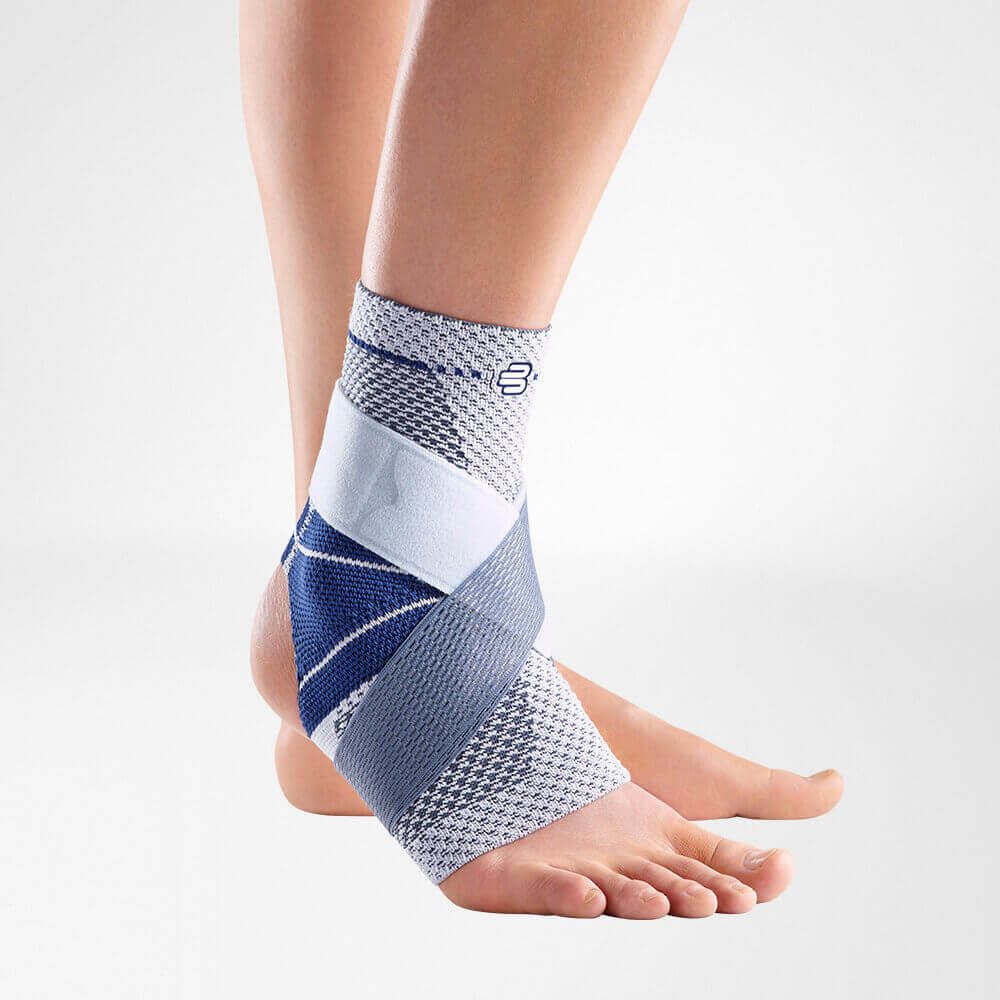Circulatory Problems / Varicose Veins
Varicose veins in the ankle often occur due to prolonged standing, sitting, or warm summer temperatures. Without treatment, the symptoms can worsen. Varicose veins are damaged vein valves, which is why it's important to treat them as soon as possible. Want to learn more about varicose veins in the ankle? Keep reading to find out how to relieve the symptoms.
What are varicose veins in the ankle?
Varicose veins are veins in your legs that no longer function properly. The circulatory system transports blood throughout the body and returns it to the heart through the veins. While blood flows easily toward the toes, it also needs to travel back upward. The body uses a pumping mechanism to push the blood upward, which must work against gravity.
Vein valves and leg movement allow the blood to flow normally back to the heart. When this mechanism doesn’t function properly, fluid builds up, leading to varicose veins.
What is the result of a blocked vein?
When a vein is blocked, blood accumulates and causes the veins to widen. As a result, the veins hold more blood. The valves that are supposed to prevent blood from flowing backward no longer close properly. This creates extra pressure on the veins in the lower leg, which can cause the ankles to swell. This is known as venous edema.
If you suffer from varicose veins over a long period, this can increase the risk of health complications. If you notice signs of spider veins (visible vein changes) or varicose veins, it’s important not to ignore them. Possible consequences of untreated varicose veins include:
- Increased risk of thrombosis
- Infections or small ulcers around swollen ankles
- Circulatory disorders or, in severe cases, open sores

What causes varicose veins in the ankle?
Varicose veins are more common in women than in men because the supporting connective tissue in women is generally less firm. Several factors can lead to varicose veins:
- Pregnancy hormones
- Prolonged standing
- A history of deep vein thrombosis
- Fluid retention caused by warm weather
- Age and wear-and-tear
What are the symptoms of varicose veins in the ankle?
Varicose veins can cause a variety of symptoms. Be alert to the signs below. If you have varicose veins in the ankle, it’s important to treat them as soon as possible. You may recognize them through the following symptoms:
- Blue or purple visible veins
- Heavy, painful, or tired legs
- Itching or a burning sensation
- Swelling
How can you best treat varicose veins in the ankle?
You can take several measures yourself to relieve varicose veins, or you can choose medical treatment. Many people also find them aesthetically unpleasant, as the veins are visible or may cause skin changes. Below, you'll find both self-care tips and medical treatment options for varicose veins in the ankle.
Self-care
There are a few steps you can take if you haven’t yet seen a physiotherapist. Some measures include wearing compression stockings to improve circulation and staying physically active.
Medical treatment options
If you have varicose veins around the ankle, there are several treatment options available. You can choose laser therapy to remove the veins. Another option is sclerotherapy, where a doctor injects a solution into the small veins to close them. Compression therapy is another method that creates a pumping action between the muscles and the skin. External pressure is applied to help reduce varicose veins.
Preventing varicose veins in the ankle
To reduce your risk of developing varicose veins, you can take several preventive measures. Prevention is better than cure. For example, wear compression stockings and increase physical activity. Additional steps you can take:
- Exercise more, such as swimming, walking, or cycling
- Avoid prolonged standing or sitting—take breaks to stretch your legs
- Eat a healthy diet and maintain a healthy weight
- Wear compression stockings for support during movement
How long does recovery from varicose veins take?
The recovery time depends on the treatment chosen. After a medical procedure such as sclerotherapy or laser treatment, you may experience relief quickly. Staying active after treatment is important to promote healing.
Suffering from varicose veins in the ankle?
Are you experiencing pain or a burning sensation due to varicose veins in the ankle? Don’t wait, take care of yourself or consider medical treatment. At Podobrace, we offer the right compression stockings to improve blood circulation. The stockings help ensure proper blood flow both before and after treatment.
Have questions about which compression stocking suits your specific symptoms or another question? Contact our team of specialists. We’re happy to help support your recovery.

Bauerfeind MalleoTrain S Ankle Support - Open Heel

Bauerfeind MalleoTrain Ankle Support
Protection level 2
Bauerfeind MalleoTrain Plus Ankle Support
Protection level 2
Morsa ThermoCY Lightweight Ankle Football Support

- Physiotherapist
- Sports podiatrist
- Manual therapist
- Podopostural therapist
- Myofascial dry needling specialist


